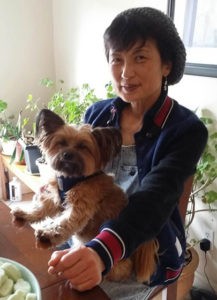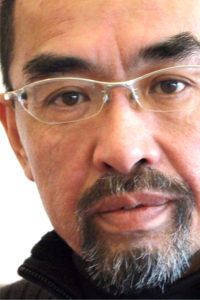Kenbiki Therapy, Kin-Seiryu-Ho, Revived In Modern Society
What Is Kenbiki? Historical Background
 By Keiko Miyazaki
By Keiko Miyazaki
Since the tenth century, to train for fighting, Japanese samurai had performed martial arts that over time became the quintessence of the Kenbiki technique. The highly refined skill to kill opponents was named “Sappo”. The opposite skill (“Kappo”), used to revive victims of asphyxia, was needed at the same time at training locations and on battle fields. That is, “Sappo” and “Kappo” were like two sides of the same technique.
The therapy handed down from martial arts arose from the wisdom and experience of those samurai who treated fractures, dislocations, and damage to tendons and muscles that occurred from rigorous training. According to the traditional medical therapy of Jujutsu, “Sujinuki-Giho” – a technique to properly rebuild the entanglement of muscle – is believed to have same origin as “Kenbiki-Giho”. Habitual poor posture, exercising, or receiving an external impact can lead to tendons and muscles that become misaligned or twisted, causing pain. To remove those pains with “Kenbiki” therapy, tendons and muscles are adjusted to the correct alignment by filliping tendons instead of massaging muscles. An excellent treatment in which the hand manipulates tendons and muscles, “Kenbiki” is derived from the Jujutsu medical therapy that was applied and developed from “Kappo” and has been passed on orally as an esoteric therapy from generation to generation. In 1868, with the introduction of western medicine, traditional medical therapies, including “Kenbiki”, have been disappearing gradually.
Kenbiki disappears from this world?
Kenbiki therapy, based on 350 years of historical practice, is the outcome of extensive clinical experiences with Jujutsu medical treatment. Its effectiveness is supported by many testimonials from people who suffered from a severe strained back, but were able to walk upright after only one visit. It’s a mystery that Kenbiki was no longer performed widely for more than 100 years. There are a couple of reasons for this other than the introduction of western medicine as the basis for mainstream clinical treatments. One was the shortage of successor practitioners because only the heir of each school inherited the esoteric skill. Another was the decreasing number of patients; the Kenbiki remedy was so effective that a master could cure patients with only one treatment. As there was no need for patients to return, it was difficult to establish an ongoing business. Some travelling samurai performed Kenbiki therapy and occasionally taught its treatment to people in return for lodging. Therefore, the word Kenbiki has become known nationwide as the method of pulling tendons on the back of the shoulder blade, but its practice along with the name might be vanishing as time goes by.
Encounter with Kenbiki, Inheritance of Koshiki Kenbiki
 Akinobu Oguchi, a photographer for the Japan Photographers Association and a representative of a computer-related firm, learned about Kenbiki at the age of 29 when he suffered from a strained back and couldn’t walk.
Akinobu Oguchi, a photographer for the Japan Photographers Association and a representative of a computer-related firm, learned about Kenbiki at the age of 29 when he suffered from a strained back and couldn’t walk.
Although Oguchi had orthopedic treatment, as well as chiropractic and acupuncture treatment, none of it worked. After two weeks of being limited to crawling, a doctor friend introduced him to a person not trained in medicine by saying that this person might be able to cure a back strain. Although Oguchi was skeptical, his curiosity persuaded him to visit the man who his doctor recommended. The Kenbiki therapist was in an ordinary house, with no clinic sign. Oguchi crawled into the house and lay down on his stomach. The therapist examined his waist and back, then turned him around and wiggled his legs. Immediately afterward, Oguchi heard him say, “This is going to hurt. Ready?” He felt an electric shock but, at the same time, his old pain was gone. “Bend your knee”, said the therapist. “There’s no pain”, replied Oguchi. “Of course, your strained back is now cured. Take a warm bath and relax tonight.” That was it for treatment. Oguchi was astonished at what had just happened to his body. “What is this therapy? It’s not chiropractic, right?” “Kenbiki,” replied the master. This is how Akinobu Oguchi came upon Kenbiki for the first time.
The effective therapeutic treatment amazed Oguchi. He wanted to master Kenbiki himself and so became an apprentice at the master’s home. Eventually he developed “Kin-seiryu-ho”, based upon two therapies: Kenbiki (inherited from masters) and Koshiki Kenbiki (that survived from oral instruction). Kin-seiryu-ho evolved from the Kenbiki therapy and has been performed in modern society. Its objective is to ensure that muscles work properly and it places importance on blood flow and lymphatic vessels. It’s a hand-manipulative therapy with a proper foundation in anatomy. Academic verification has been conducted by doctors at the University of Tokushima graduate school. Traditional Japanese Kenbiki has only recently become known as a therapy that can alleviate various pains and improve physical and mental impairment by hand methods, not through medication. The University of Mongolia has included Kenbiki in the category of traditional medical treatment.
Kenbiki (Kin-seiryu-ho) has proved to be an effective treatment on a wide variety of pains and symptoms, including mental distress. Examples are: low back pain, strained back, stiff shoulder, elbows and knees bending failure, crotch joint failure, sciatic neuralgia, facial neuralgia, intercostal neuralgia, joint imperfection, menstrual pain, fatigue, sprained neck, whiplash, autonomic ataxia, anorexia, depression and constipation. Kenbiki, Kin-seiryu-ho is a theoretical, thus comprehensible, therapy that will be handed down to the next generation by those who have experienced its treatment efficacy.

